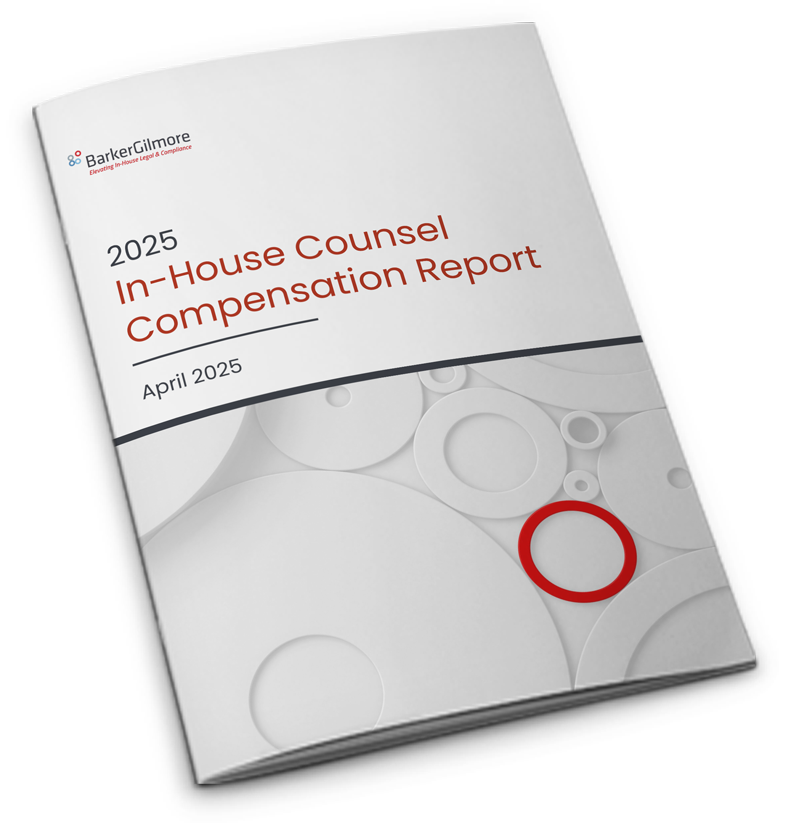In the digital age, LinkedIn is a formidable tool capable of extending the professional reach of in-house counsel far beyond traditional networking avenues. Even when not pursuing new employment opportunities, maintaining an active presence on LinkedIn can yield invaluable benefits for legal professionals. Underestimating the potential of this platform could prove to be a costly oversight in an in-house counsel’s career trajectory. Consequently, strategic planning is essential for those contemplating a transition in employment. Below are a few of the key sections in-house counsel should be sure to optimize in a LinkedIn profile.
As you read through these suggestions and update your profile, keep this overarching tip in mind – your profile should reflect the types of opportunities you desire. Some people merely list their past accomplishments without intention. Instead, strategically craft language and use keywords relevant to the opportunities that appeal to you. It should be clear that you have a demonstrated skillset and interest in certain types of companies (e.g., public, private), industries (e.g., tech, finance, real estate), and geographies (e.g., New York, East Coast, Los Angeles, West Coast). Overall, your profile should paint a clear picture of where you have been in your career and where your qualifications and interests are likely to take you from here.
Write an Engaging Introduction
Utilize the About section to introduce yourself to the virtual professional world. A brief paragraph serves as the initial point of engagement between professionals connecting on the platform. It allows individuals to make a positive first impression, articulating a professional background and stating career objectives concisely.
Creating an impactful introduction requires a strategic balance between incorporating relevant keywords and conveying a compelling narrative of one’s professional journey. To optimize visibility in job searches, it’s advisable to integrate keywords from job postings aligning with the professional’s career aspirations, ensuring the profile ranks prominently in search results. However, moderation is critical to maintain the profile’s effectiveness over time. Phrases such as “proven track record of reducing legal costs” can be strategically included to highlight specific achievements and expertise.
LinkedIn now also offers an AI-powered writing assistant to help generate or refine your About section. This tool can be particularly helpful for professionals who struggle with tone or formatting and is a great way to ensure your summary includes relevant keywords without overstuffing.
Moreover, the introduction serves as an opportunity to succinctly articulate a professional’s role, unique strengths, and value proposition to prospective employers. By showcasing key accomplishments, the summary section becomes a powerful tool for capturing the attention of recruiters and demonstrating the professional’s potential as an asset to any organization.
There is some debate about how long the introduction should be. If you write a lengthy summary, be sure that the first paragraph sums you up succinctly in case the reader does not continue. One way to break up lengthy introductions is to utilize bullet points after your first paragraph, discussing the items outlined above.
You may also consider adding a short video Cover Story introduction. This 30-second clip (visible as a clickable profile photo) adds a personal touch and helps convey your presence and communication style to potential employers.
In the end, ask yourself, “If I were reading this on someone else’s profile, would I get bored and stop reading, or is this a quick, clear, and engaging summary?”
Add an Optimized Headline
Effective headlines require strategically incorporating searchable keywords to optimize visibility and attract relevant connections. By including pertinent details such as a job title, current employer (including the ticker symbol for public companies), and any prior experience with Am Law 100 firms, candidates enhance the profile’s discoverability among recruiters and industry peers.
LinkedIn’s AI headline suggestion tool can provide helpful ideas based on your experience, desired roles, and trending keywords in your industry.
Avoid generic terms like “attorney” and instead opt for specific descriptors that succinctly summarize the current position and expertise. Additionally, leveraging industry-specific keywords and highlighting areas of expertise or specialized industries further enriches the headline, creating a compelling and engaging experience for potential connections seeking professionals with a specific skill set.
It is also acceptable to include some wittiness in the headline so long as it stays professional and precise.
Upload a Professional Profile Photo
When selecting a profile picture for LinkedIn, opt for professionalism. Choose a recent image exuding executive presence and reflecting a professional demeanor. Generally, a headshot is best. Save the casual pictures from the golf course or parties for a private album on a different platform. Your picture should instill confidence in viewers that you are a professional and would represent clients well as legal counsel.
Choose a Complimentary Banner Photo
Crafting an effective banner entails strategic considerations to maximize its impact. Incorporating pieces of a company’s branding can enhance brand consistency and credibility. Whether featuring the company logo, colors, or tagline, aligning the banner with your professional identity can reinforce affiliation and expertise. Don’t forget to double-check that your profile picture and banner do not clash.
Include Location Information
Accurate location information is pivotal for enhancing credibility and showcasing relevant experience. Alongside specifying a current location, it’s advantageous to include locations of previous employers. This practice demonstrates adaptability and enables professionals to connect with individuals and opportunities in various regions.
Whether someone has worked across different cities or countries, transparently displaying this information fosters trust and facilitates meaningful connections with professionals.
In a hybrid and remote-first work environment, also consider noting if you are open to remote or hybrid roles. This can be stated clearly in the About section or Headline (e.g., “Open to Remote In-House Counsel Roles”).
Remember, recruiters often search based on location, so omitting this information could hinder your chances of consideration. Choosing a specific location (e.g., Denver, Chicago, NYC) rather than something broad (e.g., United States) is better.
Take Advantage of the “Open to Work” Banner
People often wonder whether utilizing LinkedIn’s “Open to Work” feature is necessary when actively job hunting. The answer, like the proverbial lawyer’s answer, is it depends. Recruiters often reach out to qualified candidates regardless of whether this feature is toggled on, but it can be a strategic move in some instances. LinkedIn also offers fine-grained privacy settings, allowing you to show your job search preferences to external recruiters only, without broadcasting your search to your network.
While turning this feature off will not necessarily dissuade recruiters from reaching out to you, it might help the recruiter prioritize you over others if there are many qualified candidates in the pool.
Craft a Thoughtful Experience Section
The experience section of a LinkedIn profile serves as a pivotal showcase of one’s professional journey, providing recruiters and connections with insight into their career trajectory and accomplishments. While it’s tempting to replicate a traditional resume within this section, it’s essential to prioritize the areas recruiters value most. Instead of inundating the profile with lengthy role descriptions, succinctly highlight key responsibilities and achievements relevant to each position. By adopting a clean and concise approach, professionals can ensure profiles are easily navigable and effectively communicate a value proposition to potential employers. LinkedIn now offers AI-assisted suggestions for writing job descriptions. Use this to refine bullet points, enhance readability, and integrate relevant legal and business keywords.
Brevity is vital when crafting role descriptions within the experience section. Job descriptions should be limited to a few sentences, providing a snapshot of the individual’s responsibilities and notable contributions in each role; bullet point lists are helpful here. This streamlined approach facilitates readability and ensures the profile maintains a professional and polished appearance. Use similar formatting in each job description, making it easier for readers to follow your career trajectory. Additionally, it’s crucial to avoid overcrowding the experience section with volunteer board positions or extraneous details. Instead, utilize the dedicated volunteer section to showcase involvement in charitable or community initiatives. By compartmentalizing this information, individuals can maintain a focused and organized profile highlighting professional expertise while demonstrating a commitment to social responsibility and community engagement.
Under each job listed, there is an option to include skills. These keywords demonstrate competencies honed in each position (e.g., litigation, M&A, finance, manufacturing, compliance). You do not need to include skills under every job listed, but it is advisable to include them in your most recent few jobs. These keywords will help recruiters find your profile. For example, if a recruiter is searching for a corporate attorney with M&A, securities, and finance experience, it is more likely the recruiter will find you if those skills are listed on your profile. This is an easy way to integrate keywords into your profile, especially if they do not easily fit in other sections.
A few last tips for the experience section: Include dates for each employment, making it easy for the reader to follow your career trajectory. In the same vein, include any promotions earned at each employer. Some people omit employers early in their legal career, but if your foundational legal training was in private practice, include your firm(s) in this section. Often, hiring managers like to see foundational training in private practice followed by in-house experience. If this applies to you, be sure to include what type of law you practiced (e.g., it’s better to say “M&A Associate” rather than merely “Associate”). Of course, this is not to say that those without private practice are unqualified, but it’s helpful for recruiters and hiring managers to know if you do have private practice experience.
Education
The education section holds significant weight, offering insight into a professional’s academic background and qualifications. While detailing educational achievements, it’s paramount for professionals to list their JD graduation year. This inclusion provides crucial context for recruiters assessing the candidate’s timeline and level of experience.
Don’t Forget to Feature Skills & Recommendations
A LinkedIn profile’s skills and recommendations sections are useful in establishing credibility and building professional relationships within the platform’s network. Professionals are encouraged to authentically endorse the skills of individuals they have collaborated with or worked for.
Individuals acknowledge proficiency and foster a culture of mutual support and recognition within professional circles by endorsing the skills of colleagues, supervisors, or peers. This authentic engagement often prompts others to reciprocate, enhancing credibility and visibility on the platform.
LinkedIn’s new recommendation interface makes it easy to manage these requests and even offers smart prompts to help writers know what to say based on a role.
However, while organic endorsements are valuable, it’s still advisable to directly request positive recommendations from individuals with a strong professional rapport.
Honors and Awards
In-house counsel can leverage the honors and awards section to showcase professional achievements, recognition, and contributions within the legal field. This section offers an opportunity to highlight notable accolades, distinctions, and honors received throughout their career. Awards can be included in this section to showcase an in-house counsel’s industry leadership and professional impact.
Showcase Involvement With Organizations
Legal professionals can leverage the organizations section to show involvement in professional associations and community groups. This area provides an opportunity to highlight active participation, leadership roles, and contributions within various legal, business, and social spheres.
Publications Convey Thought Leadership
The publications section showcases expertise, thought leadership, and contributions to the legal profession. It allows you to highlight any articles, whitepapers, legal briefs, or scholarly publications you have authored or co-authored.
This area can also include materials from speaking engagements, presentations, or panels where you have shared expertise and insights. This may include presentation slides, conference papers, or summaries of keynote speeches delivered at industry events or legal conferences.
Additionally, you can leverage Creator Mode, which allows you to showcase posts by topic (hashtags), making it easier for others to find and follow your thought leadership.
Leverage Volunteer Experience
Leverage the volunteer experience section to highlight a commitment to community service, philanthropy, and social responsibility. This section provides an opportunity to showcase involvement in volunteer activities, nonprofit organizations, and charitable initiatives.
If a legal professional serves on a nonprofit organization’s board of directors or advisory board, they can highlight leadership roles in the volunteer experience section. This demonstrates a dedication to advancing the organization’s mission, goals, and skills in corporate governance, strategic planning, and nonprofit management.
Sharing Your Profile
At its core, LinkedIn is a social networking platform, so be sure to use it to do just that – to network. There are many ways to direct people to your profile. Here are a few recommendations to consider:
Customize your profile’s URL to add a touch of personalization and enhance its professional appearance. You can designate a custom URL by following these steps: (1) click the Me icon at the top of your homepage, (2) select View Profile, (3) click the Edit icon next to “Public profile & URL,” and (4) click the Edit icon under the “Edit your custom URL” section. A best practice is to include an intuitive version of your name, such as www.linkedin.com/in/robertbarker. This simple update makes your profile more accessible and reinforces a personal brand.
Add your customized profile URL to your resume. Recruiters and hiring managers will almost always search for your profile, so you might as well make it easy for resume readers to find you.
Pin key content in your Featured section (e.g., resume, articles, awards) to showcase notable publications or accomplishments.
You can also integrate Calendly or similar tools into your Contact Info section for easy meeting scheduling, and link to personal portfolios or Notion pages if relevant.
Use the LinkedIn mobile app to facilitate quick connections. Rather than leaving a networking event with a pile of business cards likely to be forgotten, add your new connections on LinkedIn right when you wrap up your introductory conversation. This is an easy way to ensure you will remain connected and have an easily accessible future mode of communication, especially if the new connection’s contact info changes due to switching employers. When you open the mobile app, click the Search box, and a small QR code icon will appear. After clicking the icon, a larger QR code will display. Your new acquaintance can use their phone’s camera app to scan the QR code and immediately add you as a LinkedIn connection. No more piles of forgotten business cards.
More Best Practices to Optimize Your LinkedIn Profile
Ensuring a polished and professional LinkedIn profile begins with meticulous attention to detail, including eradicating typos or grammatical errors. Professionals should consider having a trusted colleague or friend review the profile after editing to catch any overlooked mistakes, as a flawless profile reflects positively on professionalism and attention to detail.
Consistently updating and refreshing the LinkedIn profile tells search engines and connections the profile is active and engaged. This can involve regularly updating the experience section, adding new skills or endorsements, and sharing relevant content or updates. By keeping the profile current, in-house counsel demonstrate ongoing professional growth and engagement within the industry.
Additionally, actively engaging with the LinkedIn community through likes, comments, and shares can enhance visibility and foster valuable connections.
Lastly, your profile should reflect your career journey thus far and appeal to the types of opportunities you seek. For example, if you want a senior in-house counsel role within the manufacturing industry located in the Midwest, be sure that your profile includes keywords and phrases demonstrating that you have substantial legal and leadership experience relevant to the types of companies in which you are interested, and it should be clear you are located in or have ties to the preferred geography.
Recruiters use the back end of LinkedIn like Google. They might search “attorney, M&A, corporate, Ohio, manufacturing,” if your profile reflects these keywords, you will likely appear in a recruiter’s search.
Overall, LinkedIn is a powerful tool to build your personal brand. Creating a thoughtful profile will help maximize the opportunities available to you.
Find Your Next Role or Secure Top Talent With BarkerGilmore
LinkedIn serves as a dynamic platform where in-house counsel can cultivate a professional identity, connect with peers and industry leaders, and seize new opportunities for career progression. As the legal landscape evolves, LinkedIn remains an indispensable ally for navigating the complexities of the modern legal profession and charting a course toward continued success.
As always, reach out anytime if you or your organization may benefit from BarkerGilmore’s recruiting, leadership development, or legal and compliance department consulting services.
Connect with a legal recruiting advisor
* indicates required fields




